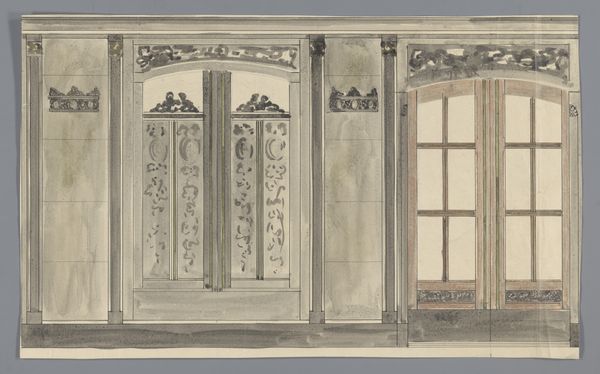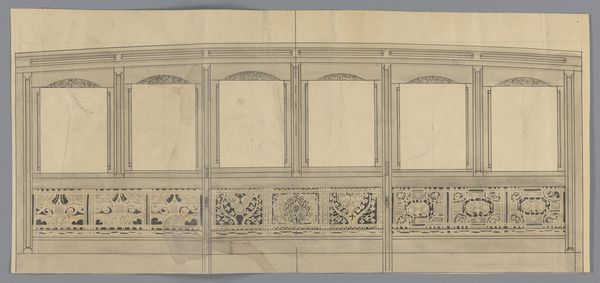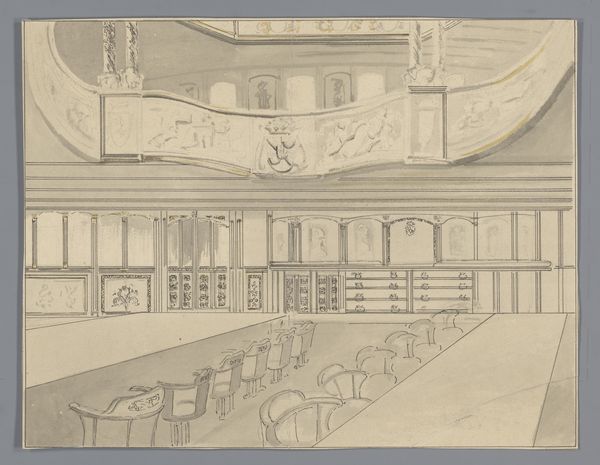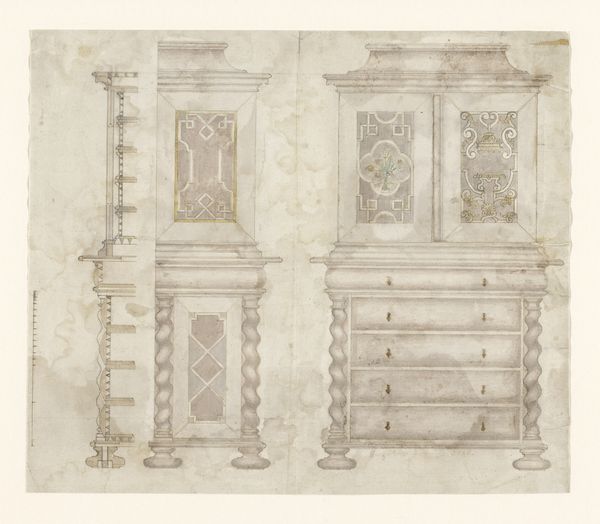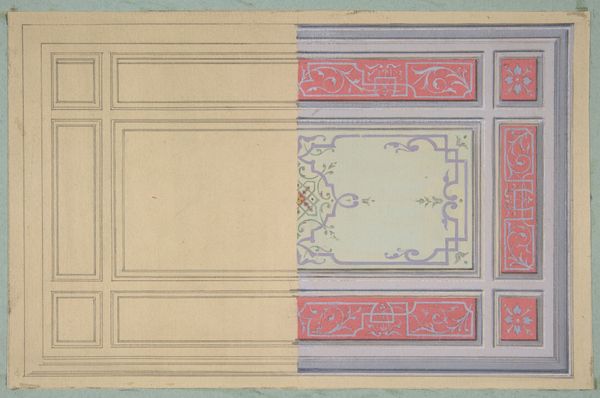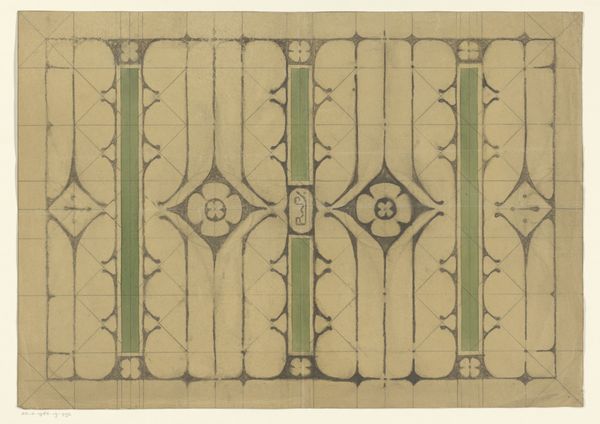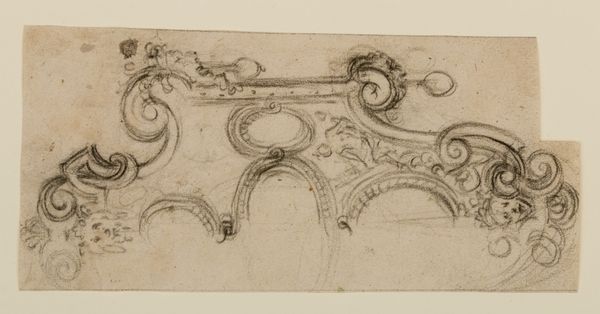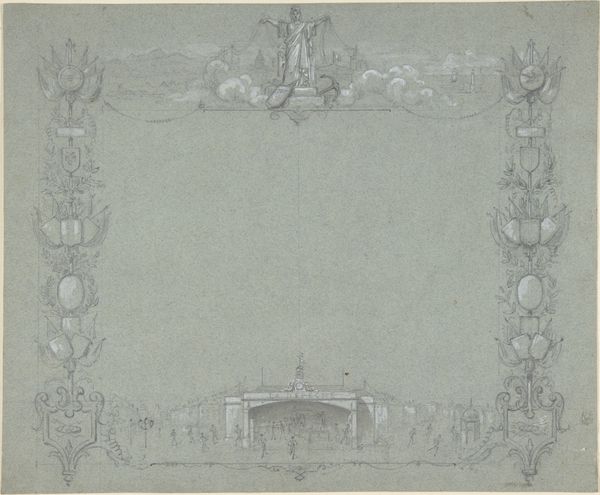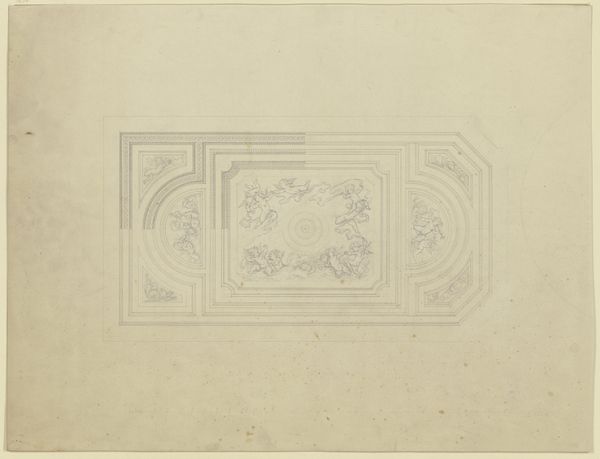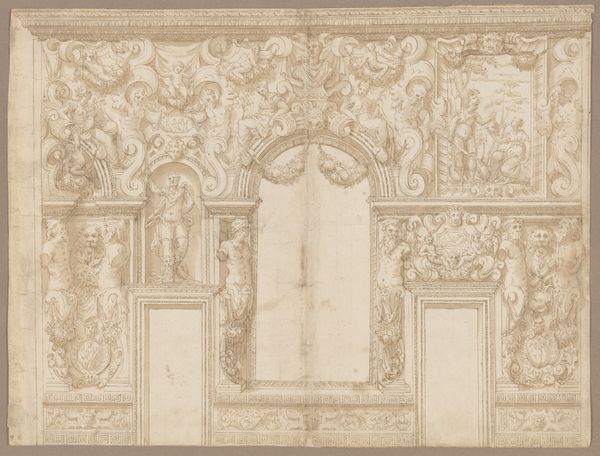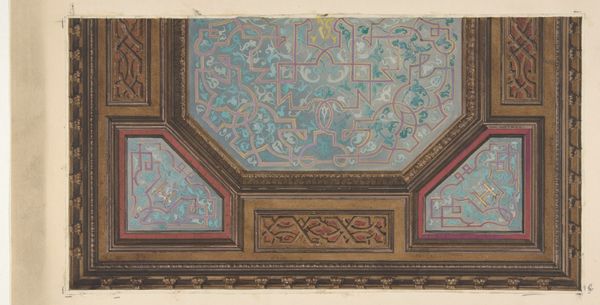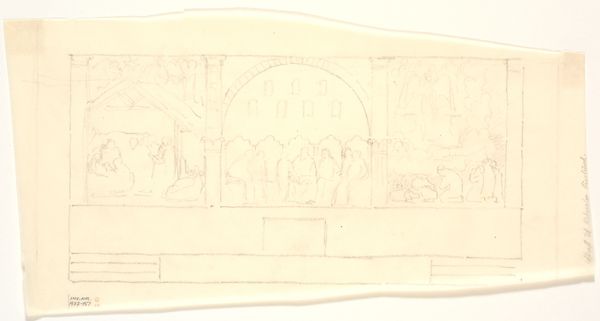
Ontwerp voor scheidwand met drie glazen ruiten, voor een scheepsinterieur 1874 - 1945
0:00
0:00
drawing, mixed-media, paper, ink
#
drawing
#
aged paper
#
mixed-media
#
art-nouveau
#
homemade paper
#
paper non-digital material
#
sketch book
#
paper texture
#
paper
#
personal sketchbook
#
ink
#
geometric
#
folded paper
#
line
#
storyboard and sketchbook work
#
paper medium
#
design on paper
Dimensions: height 260 mm, width 256 mm
Copyright: Rijks Museum: Open Domain
Editor: Here we have Carel Adolph Lion Cachet’s "Design for a Partition with Three Glass Windows, for a Ship Interior," created sometime between 1874 and 1945. It’s a mixed media work, primarily ink on paper. It gives me a feeling of refined luxury, almost like stepping back into the age of steamships. What stands out to you about this design? Curator: The beauty here lies in its articulation of status and travel. Cachet’s design speaks volumes about the evolving role of ships, from simple transport to opulent floating palaces. Note the careful detailing – the art nouveau influences, the suggestion of private compartments within those glass panes. This wasn't merely about getting from one place to another; it was about experiencing travel as a display of wealth and sophistication. How might the cultural perception of sea travel have influenced such a design? Editor: That’s interesting – I hadn't considered the social aspect of travel so explicitly. So, the design of the partition becomes a kind of visual marker of social class? Curator: Precisely. And more than that, consider the very *idea* of bringing Art Nouveau, a style associated with elite culture, onto a ship. It democratized luxury to some extent by making luxury available to a broader paying public, but also cemented social divides within the vessel itself. Where do you see other evidence of these social hierarchies within the artwork? Editor: I suppose the level of detail given to the ornamentation below the windows, compared to the minimalist space reflected above, might suggest that different audiences existed for each. It definitely reframes how I view what I initially saw as simply a "steamship." Curator: Exactly. And considering it as a drawing, the use of paper, as opposed to the actual materials on the boat is crucial in democratizing luxury. The ability to see such grandeur is thus extended to those who see the work on display. Editor: I appreciate your insights! It's helped me to view this piece through a different lens. Thank you! Curator: A pleasure! It’s these conversations that really help us unravel the layers of meaning within artworks and discover so much about their historical moment.
Comments
No comments
Be the first to comment and join the conversation on the ultimate creative platform.
